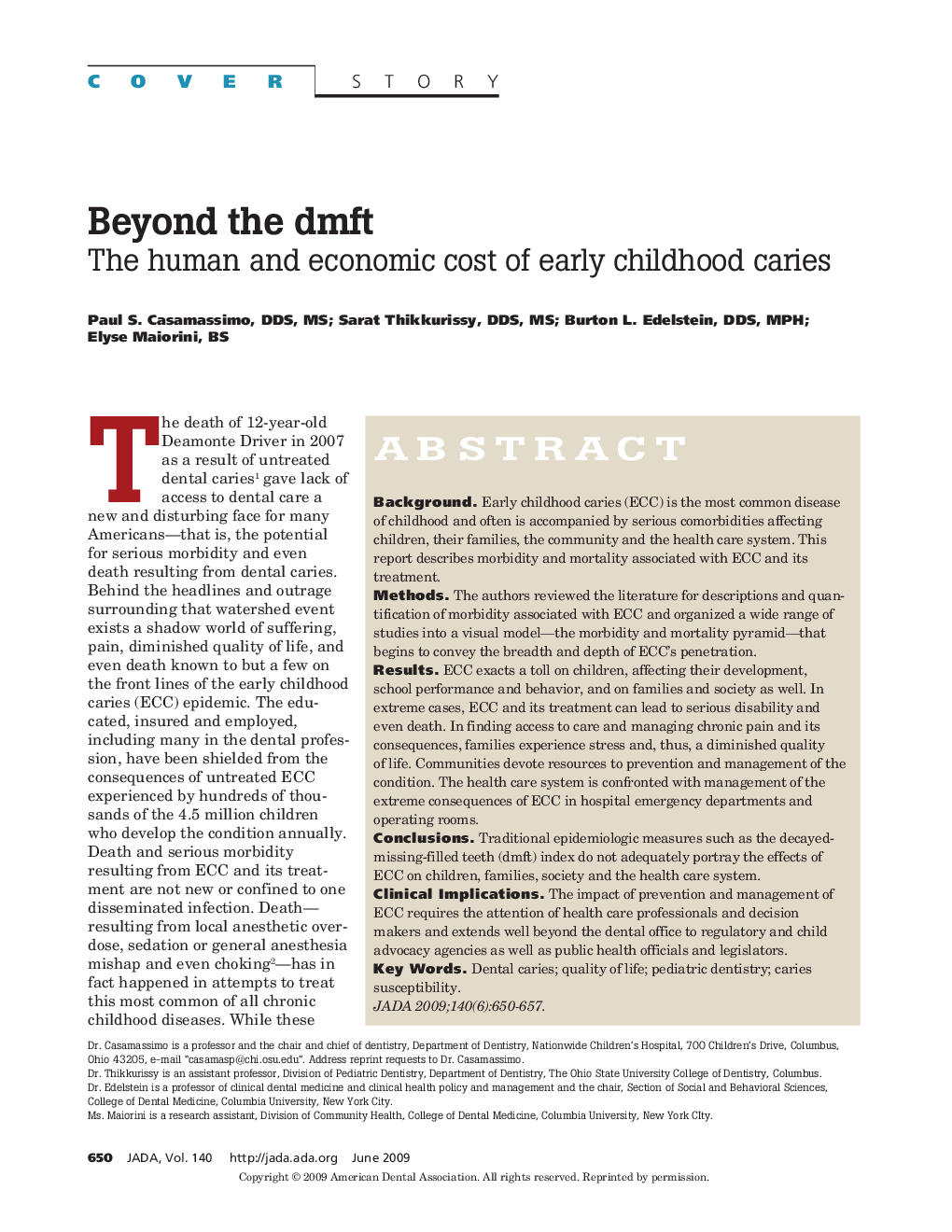| Article ID | Journal | Published Year | Pages | File Type |
|---|---|---|---|---|
| 3139690 | The Journal of the American Dental Association | 2009 | 8 Pages |
ABSTRACTBackgroundEarly childhood caries (ECC) is the most common disease of childhood and often is accompanied by serious comorbidities affecting children, their families, the community and the health care system. This report describes morbidity and mortality associated with ECC and its treatment.MethodsThe authors reviewed the literature for descriptions and quantification of morbidity associated with ECC and organized a wide range of studies into a visual model—the morbidity and mortality pyramid—that begins to convey the breadth and depth of ECC's penetration.ResultsECC exacts a toll on children, affecting their development, school performance and behavior, and on families and society as well. In extreme cases, ECC and its treatment can lead to serious disability and even death. In finding access to care and managing chronic pain and its consequences, families experience stress and, thus, a diminished quality of life. Communities devote resources to prevention and management of the condition. The health care system is confronted with management of the extreme consequences of ECC in hospital emergency departments and operating rooms.ConclusionsTraditional epidemiologic measures such as the decayed-missing-filled teeth (dmft) index do not adequately portray the effects of ECC on children, families, society and the health care system.Clinical ImplicationsThe impact of prevention and management of ECC requires the attention of health care professionals and decision makers and extends well beyond the dental office to regulatory and child advocacy agencies as well as public health officials and legislators.
